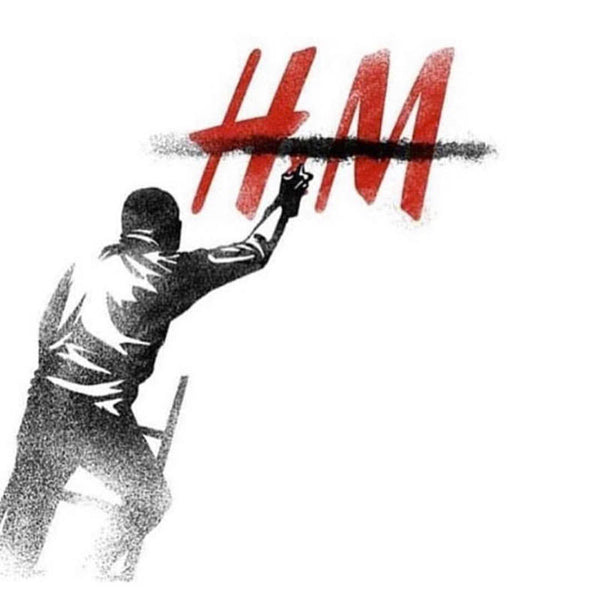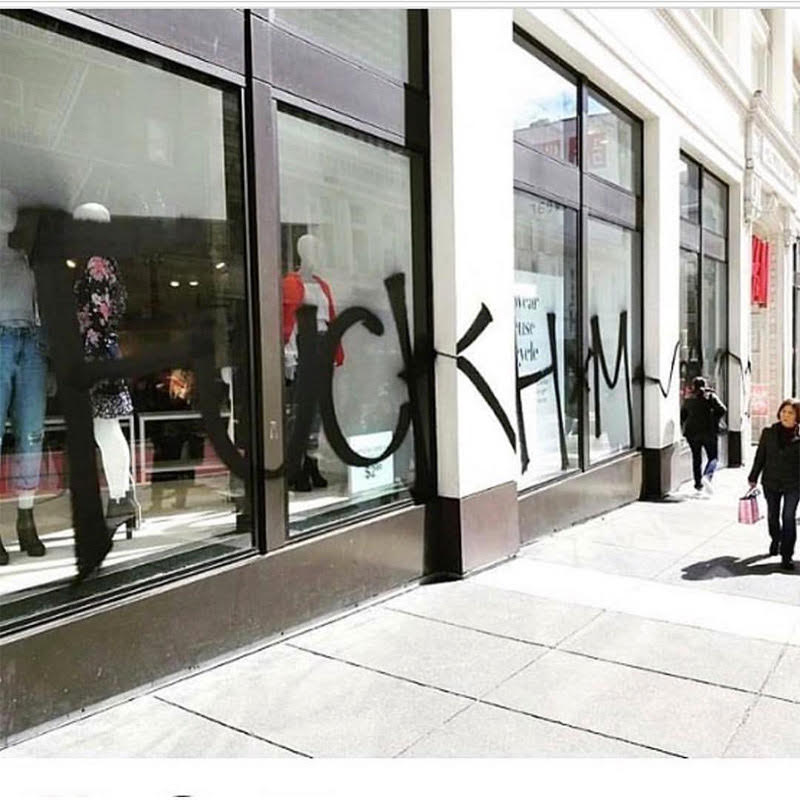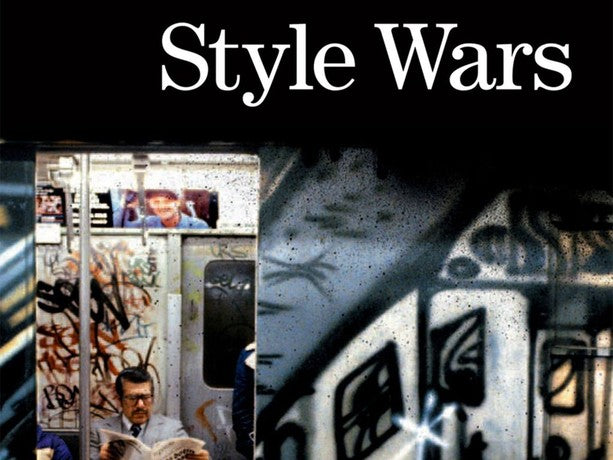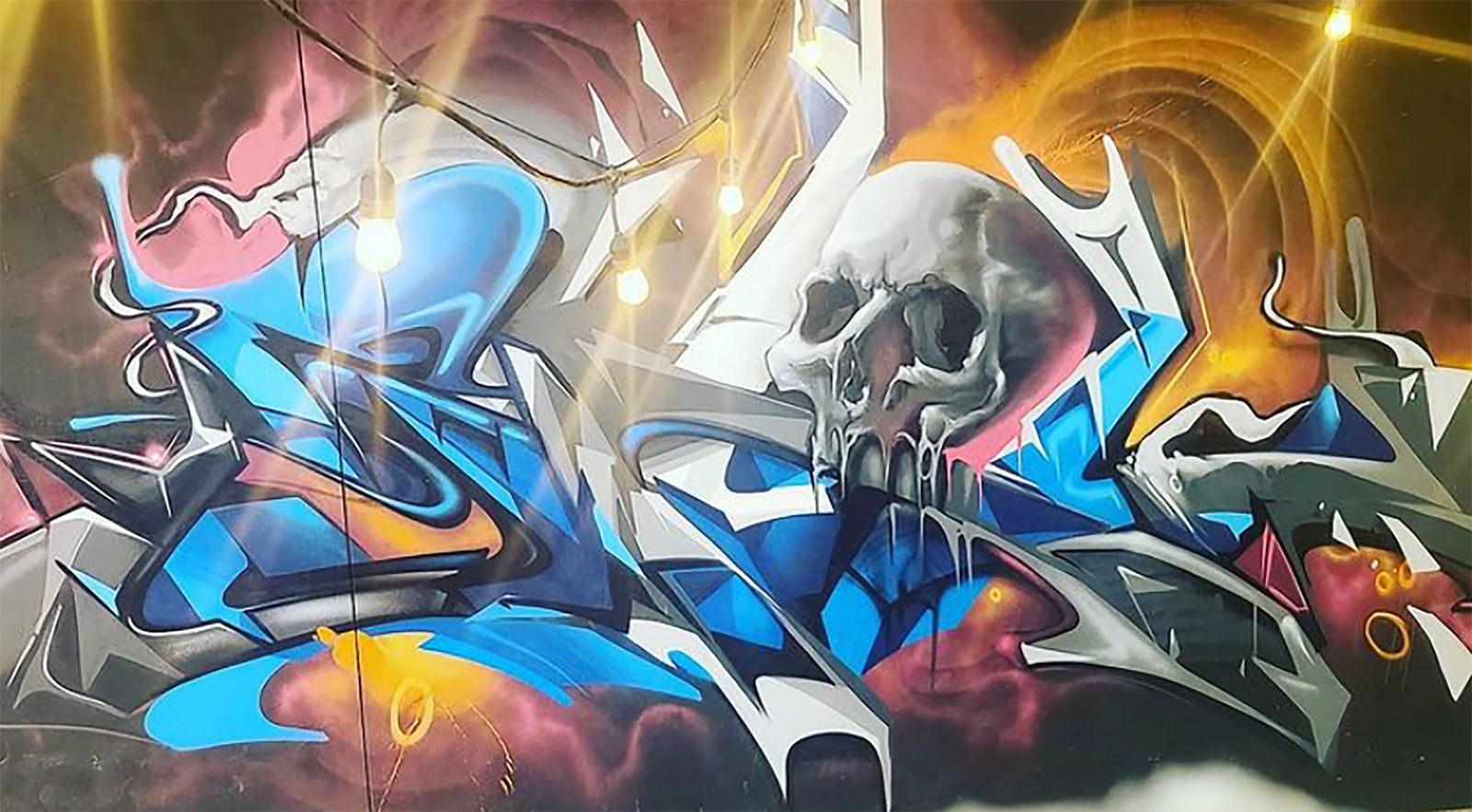The dispute between Revok and H&M unleashes controversy, boycott and rumors on social networks.
A deafening uproar has arisen in the street art community because of the conflict that was unfurled between Jason “Revok” Williams and the clothing brand H&M. The multinational textile company goes up against one of graffiti’s heavyweights, and though his frenetic street activity seems to have decreased due to artistic experimentation, he doesn’t seem to be tired of being on everyone's lips because of problems.

REVOK vs. H&M: A Background
The epicenter of the dispute was an image from an H&M video and photo marketing campaign. In it, one of Revok’s recognizable linear-patterned street paintings created by multiple aerosols being activated simultaneously, served as decoration in an improvised set. It’s worth mentioning that the easily attributable to Jason Williams aesthetic provides a dynamism worthy of praise in the photographic compositions used by the brand.
According to Hypebeast a few days ago, this past January 8th, Williams’ lawyer stated that the fashion giant had made unauthorized use of an original artwork in a harmfulway that could cause confusion to buyers who were familiar with his work and might believe there was a relationship between the two. The letter urged H&M to “immediately cease” using Revok’s work in its propaganda campaign on the grounds that it was copyright infringement.
On March 12th, H&M responded to the letter stating that the author had filed a claim for an “artwork” that resulted from a criminal act and therefore, Mr. Williams did not have any copyright by which to defend himself. “The copyright act that protects authors under federal law doesn’t cover illegally created artworks."
Both specialized and more general media outlets picked up on the controversy, consequently infesting social media with a campaign to support the LA writer and artist, and to encourage a boycott on the Swedish company.
Of course, in mass media you can find infinite opinions in support of the multinational brand condemning any type of illegal act no matter how creative it may be.

The Legal Position
This conflict over artistic rights in the graffiti world reminds us of a case just a month ago where 5pointz artists were compensated for the destruction of their art, or less recently and more similarly, the case of the lawsuit filed between Sacer IRAK’s family and McDonalds.
In all the cases it seems like the artists are the ones who win, but at the same time it’s difficult to place an ethical limit that legitimizes an artist who demands money for an illegal and, in theory, selfless act.
There are innumerable examples of clothing brands of all types that have hijacked graffiti aesthetic for their designs and campaigns, affecting renown and unknown writers alike worldwide. In most cases, and more common in the case of writers, these acts are archived in an anecdotical file seeing as though the writer in question neither wants to risk their anonymity, nor consider their creative work as a way to make profit. Nevertheless, when the individual becomes an artist and their creative potential is what allows them to earn money, the topic becomes more delicate.
In both cases it is understandable that, as Revok’s lawyer states, a relationship between an artist and a multinational company as well known as H&M can have disastrous consequences on their reputation both on an artistic level as well as in terms of street credibility. However, it is difficult not to contemplate the economic factor being a crucial motivation in these types of claims.
The speculations are going in every direction and there’s even those who’ve announced in a jocular tone that if H&M wins the lawsuit, they’ll start with commercializing Banksy’s reproductions.
There’s also a probably fraudulent rumor circulating of some statements made by the Swedish company saying that they haven’t only given up in the battle against Revok, but that in order to discourage the boycott from the street art community, that they will allow the facades of their establishments to be painted freely. It’s a completely bizarre hoax that's going around in the cascade of rumors that this dispute has unleashed.
Where the Dispute Stands
For the time being, H&M seems to have posted a statement on its Instagram Stories backing out of the beef. This decision could have been caused by the massive response from the graffiti and street art community which also provoked physical attacks motivated by the hashtag #hmchallenge, a call out to vandalize the Swedish brand’s establishments.
If this is the final resolution to this whole mess, it’s important to remember this whole process as a demonstration of the graffiti and street art communitys’ social power when they join forces for one common cause. And that is more important than it may seem.
- Text by Alberto F.






Leave a comment (all fields required)